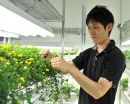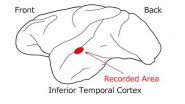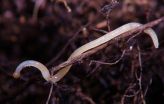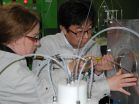(Press-News.org) The results of the QUT Centre for Accident Research & Road Safety - Queensland (CARRS-Q) study have been presented at the Occupational Safety in Transport Conference (OSIT) which is being held on the Gold Coast and finishes today.
Dr Ross Blackman, a CARRS-Q road safety researcher, said speed limit credibility was being put at risk when reduced speed limits and related traffic controls remained in place at inactive roadwork sites.
"It's seen as crying wolf. If people are asked to slow down at roadwork sites but find there is no roadwork being undertaken they become de-sensitised to the signage and ignore speed limits," he said.
"In 2013, our research found that at three Queensland rural roadwork sites, the majority of vehicles observed exceeded the posted speed limits by at least 5km/h."
Dr Blackman's survey involved more than 400 people who were asked to estimate their speed for a range of different roadwork site scenarios, some of which were inactive sites and others with road workers visible.
"We found when a road worker and machinery were visible, drivers nominated lower speeds, suggesting that they were far more likely to slow down than if they saw no activity," he said.
"There was about a 20 per cent reduction in speed between an inactive roadwork site (53km/h) compared to an active site with workers visible (42km/h)."
Dr Blackman said despite reduced speed limits, crash rates and crash severity around roadwork sites were high because drivers failed to slow sufficiently and were often not paying attention.
"Roadwork sites have high crash rates and there have been numerous fatalities at roadwork sites in Queensland involving workers and public road users," he said.
Dr Blackman said the study reinforced moves by the Queensland Government to review speed limit signage around roadwork sites, but cautioned that hazards may also remain outside of work hours, requiring reduced speed limits around the clock at some sites.
"There are no simple solutions, but multiple measures used in combination may be most effective. With technology, for example, variable speed limit signs can be easily changed without the need for workers to physically move or replace traditional static signage," he said.
"There are also feedback speed displays which record and display how fast a vehicle is travelling, which drivers respond to well.
"Our survey showed road workers on site had the biggest impact on drivers to reduce speed, while the most effective specific measure was having police visually present and potentially conducting enforcement," he said.
"If we can combine the effective measures, then we are more likely to see drivers reduce their speed, which will improve safety for both drivers and workers."
INFORMATION:
The OSIT conference, hosted by CARRS-Q, brings together experts from all facets of transport safety including roads, rail, fleets, and mining to improve workplace health and safety. For more information on the conference, visit http://ositconference.com/.
Media contact:
Sandra Hutchinson, QUT Media (Tue, Wed, Fri), 07 3138 9449 or media@qut.edu.au
After hours, Rose Trapnell, 0407 585 901
Don't cry wolf: Drivers fed up with slowing down at inactive roadwork sites
2014-09-19
ELSE PRESS RELEASES FROM THIS DATE:
Long-distance communication from leaves to roots
2014-09-19
Leguminous plants are able to grow well in infertile land, and bear many beans that are important to humans. The reason for this is because most legumes have a symbiotic relationship with bacteria, called rhizobia, that can fix nitrogen in the air and then supply the host plant with ammonia as a nutrient.
The plants create symbiotic organs called nodules in their roots. However, if too many root nodules are made it will adversely affect the growth of the plants, because the energy cost of maintaining excessive nodules is too large. Therefore legumes must have a mechanism ...
Lymphatic fluid used for first time to detect bovine paratuberculosis
2014-09-19
Paratuberculosis, also known as Johne's disease, is caused by the bacterium Mycobacterium avium subspecies paratuberculosis (MAP). In Austria, there is a legal obligation to report the disease. Paratuberculosis mainly affects ruminants and causes treatment-resistant diarrhoea and wasting among affected animals. The disease can cause considerable economic losses for commercial farms. The animals produce less milk, exhibit fertility problems and are more susceptible to other conditions such as udder inflammation.
To date there has been no treatment for paratuberculosis. ...
Neurons express 'gloss' using three perceptual parameters
2014-09-19
Japanese researchers showed monkeys a number of images representing various glosses and then they measured the responses of 39 neurons by using microelectrodes. They found that a specific population of neurons changed the intensities of the responses linearly according to either the contrast-of-highlight, sharpness-of-highlight, or brightness of the object. This shows that these 3 perceptual parameters are used as parameters when the brain recognizes a variety of glosses. They also found that different parameters are represented by different populations of neurons. This ...
Environmental pollutants make worms susceptible to cold
2014-09-19
Imagine you are a species which over thousands of years has adapted to the arctic cold, and then you get exposed to a substance that makes the cold dangerous for you.
This is happening to the small white worm Enchytraeus albidus, and the cold provoking substance, called nonylphenol, comes from the use of certain detergents, pesticides and cosmetics.
Nonylphenol is suspected of being a endocrine disruptor, but when entering the worm it has another dangerous effect: It inhibits the worm's ability to protect the cells in its body from cold damage.
Enchytraeus albidus ...
Quick-change materials break the silicon speed limit for computers
2014-09-19
The present size and speed limitations of computer processors and memory could be overcome by replacing silicon with 'phase-change materials' (PCMs), which are capable of reversibly switching between two structural phases with different electrical states – one crystalline and conducting and the other glassy and insulating – in billionths of a second.
Modelling and tests of PCM-based devices have shown that logic-processing operations can be performed in non-volatile memory cells using particular combinations of ultra-short voltage pulses, which is not possible with silicon-based ...
Milestone in chemical studies of superheavy elements
2014-09-19
An international collaboration led by research groups from Mainz and Darmstadt, Germany, has achieved the synthesis of a new class of chemical compounds for superheavy elements at the RIKEN Nishina Center for Accelerator-based Research (RNC) in Japan. For the first time, a chemical bond was established between a superheavy element – seaborgium (element 106) in the present study – and a carbon atom. Eighteen atoms of seaborgium were converted into seaborgium hexacarbonyl complexes, which include six carbon monoxide molecules bound to the seaborgium. Its gaseous properties ...
Technique to model infections shows why live vaccines may be most effective
2014-09-19
Vaccines against Salmonella that use a live, but weakened, form of the bacteria are more effective than those that use only dead fragments because of the particular way in which they stimulate the immune system, according to research from the University of Cambridge published today in the journal PLOS Pathogens.
The BBSRC-funded researchers used a new technique that they have developed where several populations of bacteria, each of which has been individually tagged with a unique DNA sequence, are administered to the same host (in this case, a mouse). This allows the ...
How pneumonia bacteria can compromise heart health
2014-09-19
Bacterial pneumonia in adults carries an elevated risk for adverse cardiac events (such as heart failure, arrhythmias, and heart attacks) that contribute substantially to mortality—but how the heart is compromised has been unclear. A study published on September 18th in PLOS Pathogens now demonstrates that Streptococcus pneumoniae, the bacterium responsible for most cases of bacterial pneumonia, can invade the heart and cause the death of heart muscle cells.
Carlos Orihuela, from the University of Texas Health Science Center in San Antonio, USA, and colleagues initially ...
Human sense of fairness evolved to favor long-term cooperation
2014-09-19
VIDEO:
This is a video describing the ultimatum game in chimpanzees.
Click here for more information.
ATLANTA—The human response to unfairness evolved in order to support long-term cooperation, according to a research team from Georgia State University and Emory University.
Fairness is a social ideal that cannot be measured, so to understand the evolution of fairness in humans, Dr. Sarah Brosnan of Georgia State's departments of Psychology and Philosophy, the Neuroscience Institute ...
Nuclear spins control current in plastic LED
2014-09-19
SALT LAKE CITY, Sept. 18, 2014 – University of Utah physicists read the subatomic "spins" in the centers or nuclei of hydrogen isotopes, and used the data to control current that powered light in a cheap, plastic LED – at room temperature and without strong magnetic fields.
The study – published in Friday's issue of the journal Science – brings physics a step closer to practical machines that work "spintronically" as well as electronically: superfast quantum computers, more compact data storage devices and plastic or organic light-emitting diodes, or OLEDs, more efficient ...



